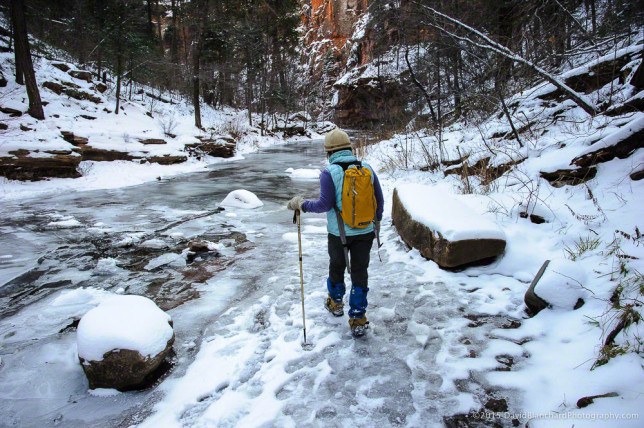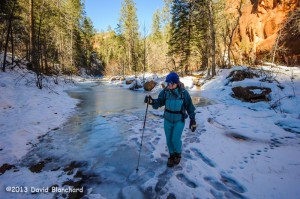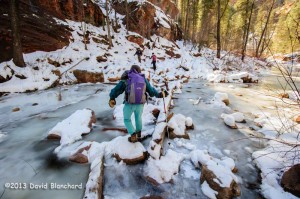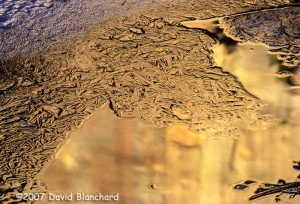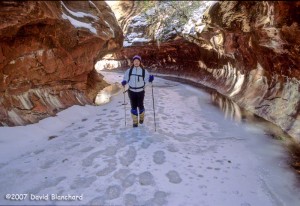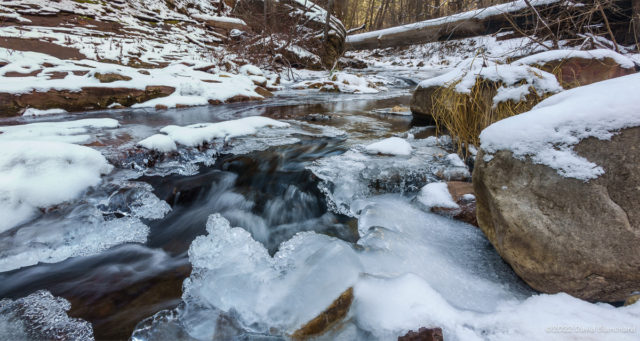
It has been a few years since we have done a winter hike up the West Fork of Oak Creek. This is mainly because of overcrowding in the canyon and a full parking lot. But earlier this week we passed by the entrance and noted that the parking lot was nearly empty. We already had plans for that day but decided to hike the following day.
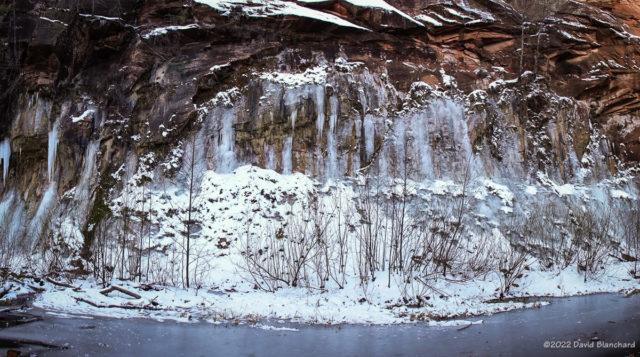

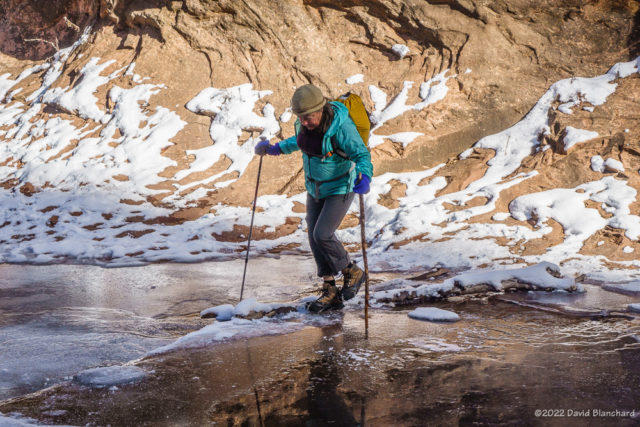
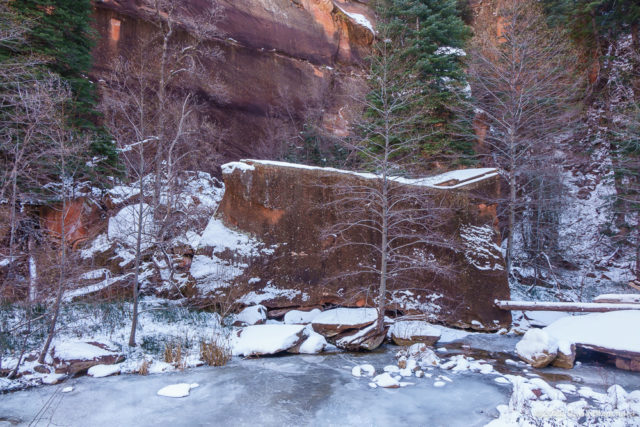
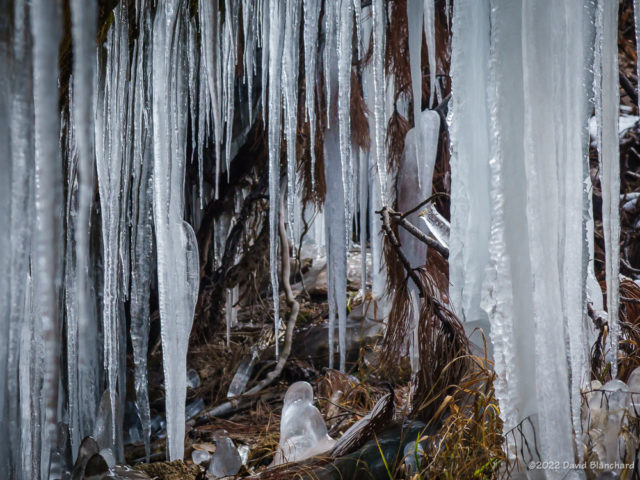
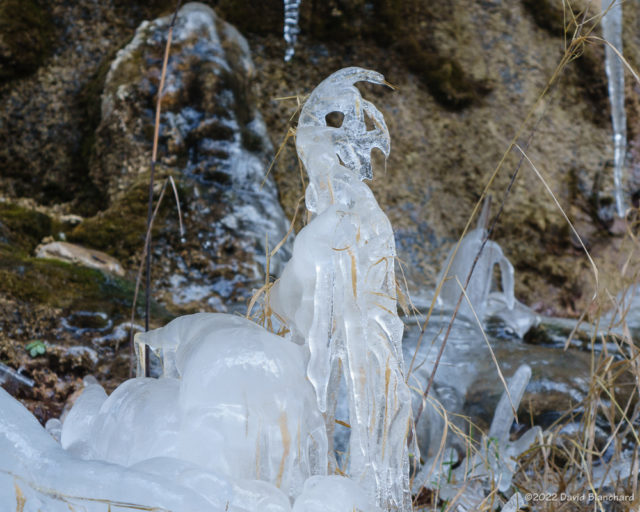
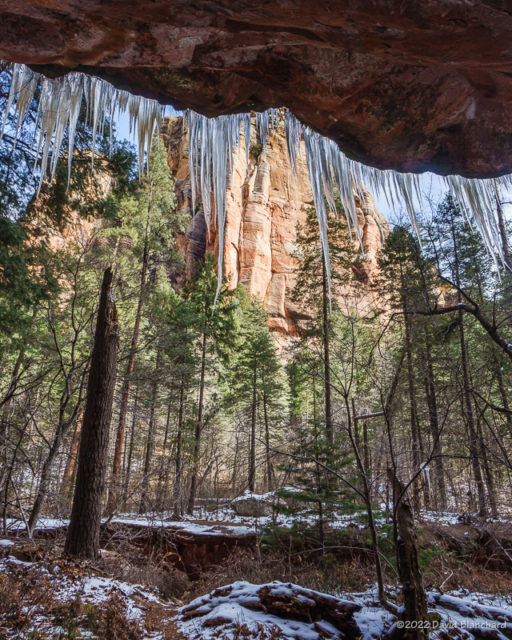

We have done this hike in the winter enough times to know that having solid foot traction gear is necessary as well as a set of hiking poles. With those aids, we had very little trouble hiking to the end of the established trail (~3.2 miles). As noted at the trailhead, there are 13 stream crossings and each one had ice-covered rocks and/or logs to step on. The trail was a combination of packed snow and ice.
We saw only a few people at the start of the hike and none after the first half-mile or so. On the way back, we encountered a few hiking parties intent on reaching the end of the trail and they were close enough that I have little doubt that they made it. As we got closer to the trailhead we ran into several parties that were ill-equipped to be doing this winter hike.
This winter hike is best right after a snowstorm but that can mean having to break trail through the snow. We’ve done that and it was a workout. But the payoff in snow-covered cliffs and creek are worth the effort.
——————————————————————————————————————————
Here are some older entries about hiking West Fork in the winter:



